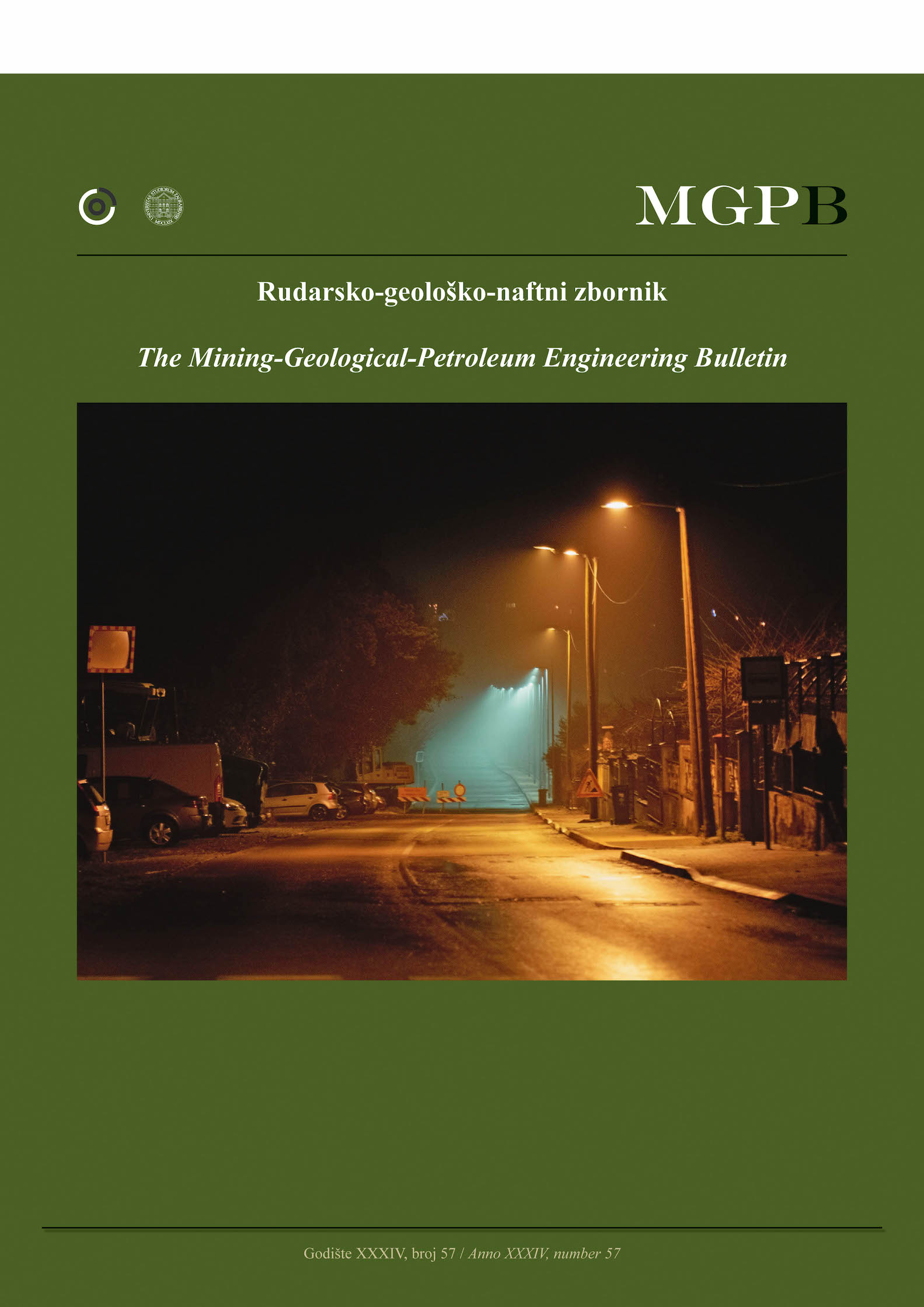Mapping specular hematite ore beneficiation routes to industrial application standards
DOI:
https://doi.org/10.17794/rgn.2022.1.1Keywords:
Specularite; Micaceous iron oxide; Magnetic separation; Gravity separation; TaguchiAbstract
The purpose of this study is to determine the appropriate method for micaceous iron ore processing and production per-industrial application standards. After identifying the characteristics of the samples (with XRF, XRD, mineralogical analyzes), gravity and magnetic separation tests were carried out. Quartz and hematite are the main minerals of micaceous hematite ores. Silica grade as the major impurity varies from 10-68 %. The total iron content of the samples also varies from 15-62 %. Jig and shaking table did not provide a good result in micaceous hematite beneficiation to achieve the standard of its specific applications. Gravity concentration by the spiral in the size range of -200 and -300 µm has led to the production of iron concentrates with a grade of 62.34 and 64.84 %, respectively. The recovery values for the two experiments are 13.50 and 12.60 %, respectively. Therefore, the spiral did not provide a good result in the micaceous iron ore beneficiation. High-intensity magnetic separation (1.2 T) has resulted in a product with a grade and recovery of 65.98 % and 88.35 %, respectively. The experimental design utilizing the Taguchi method considering the increasing of grade or recovery priority indicated that for micaceous iron beneficiation with a priority of recovery increasing, the feeder frequency, roll speed, and adjustable gate angle should be at 6.5 Hz, 95 rpm, and 20°, respectively. However, for micaceous iron beneficiation with a priority of grade increasing, the feeder frequency, roll speed, and adjustable gate angle should be at 2.5 Hz, 135 rpm, and 60°, respectively.
Downloads
Published
How to Cite
Issue
Section
License
Copyright (c) 2021 authors and journal

This work is licensed under a Creative Commons Attribution 4.0 International License.
Creative Commons-BY
Authors who publish with this journal agree to the following terms:
In agreeing this form, you certify that:
- You read the ethical codex of the RGN zbornik available at journal web.
- You submitted work is your original work, and has not previously been published and does not include any form of plagiarism.
- You own copyright in the submitted work, and are therefore permitted to assign the licence to publish to RGN zbornik.
- Your submitted work contains no violation of any existing copyright or other third party right or any material of an obscene, libellous or otherwise unlawful nature.
- You have obtained permission for and acknowledged the source of any illustrations, diagrams or other material included in the work of which you are not the copyright owner.
- You have taken due care to ensure the accuracy of the work, and that, to the best of your knowledge, there are no false statements made within it.
- All co-authors of this submitted work are aware of, and in agreement with, the terms of this licence and that the submitted manuscript has been approved by these authors.
Publication licence
You retain copyright in your submitted work, according to journal license policy (CC-BY). By signing this form you agree that RGN zbornik may publish it under the publication licence. In summary the licence allows the following:
Anyone is free:
- To copy, distribute, display, and perform the work.
- To make derivative works.
Under the following conditions:
- The original author must always be given credit.
- The work may not be used for commercial purposes.
- If the work is altered, transformed, or built upon, the resulting work may only be distributed under a licence identical to this one.
Exceptions to the licence
In addition to publishing the work printed under the above licence, RGN zbornik will also enable the work to be visible online.
The journal editorial can change the licence rules anytime but it cannot retroactively restrict author(s) rights.


